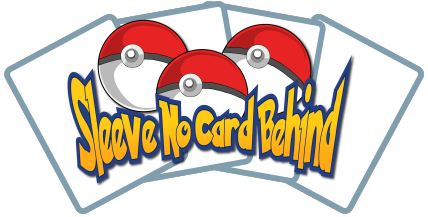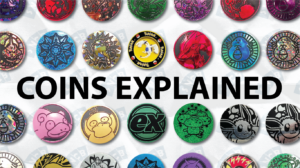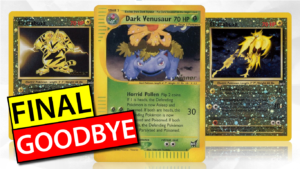Does grading a card increase its value?
-
By: Oliver Copeland
- Published:
- Last Updated: February 6, 2024
Do you know the feeling of finding a rare Pokémon card in your collection? Maybe you were flipping through old cards at a garage sale or stumbled across a forgotten pack of cards at the bottom of your toy box. No matter how you came across it, that little bit of cardboard with a cartoon animal on it was suddenly worth way more than any other card in your deck. How much did that uptick in value depend on the grade of the card though? If you had an ungraded holographic Pokémon card, would it be worth less than a graded common version? In this blog post, we ask the big question: Does grading a card increase it’s value?
What is grading?
Card grading is the process of having a trading card graded by a professional organization to determine its condition and authenticity. A grading company will assign a grade to the card, usually from 1 to 10, with 1 being poor and 10 being perfect. The higher the grade, the more valuable the card is likely to be.
Why do graded cards cost more?
Graded cards cost more because they are authenticated and come with a guarantee of their condition.
There are a few reasons why graded cards are more expensive. The first reason is that it costs money to get a card graded. The second reason is that there is less risk involved in buying a graded card. If an individual decides to grade a card themselves and the card turns out not to be authentic, they would be out the cost of grading the card as well as the value of the card itself.
The third reason graded cards cost more is that they are in high demand. Many collectors are willing to pay a premium for a card that has been certified and guaranteed to be in perfect condition. This assurance allows them to know exactly what they are getting and eliminates any risk.
Which cards to grade to turn a profit
Some people decide to grade cards solely for the purpose of making a profit from the sale.
This can be lucrative as long as you have some experience and understand which cards won’t plummet in value by the time they make the trip to and from the grading company. When a new set releases, the value of the chase cards is high and then falls off as more of them are printed. These are volatile card values and should be avoided unless you’re paying for a less than one-week service with the grading company. It’s not that you’ll lose money, but you may come close to breaking even in some scenarios.
Grading cards for profit is best done with cards that have been established as sought-after. An obvious but appropriate example is a Base set Charizard. This card is deeply rooted as one of the most valuable and sought-after cards, and will always fetch more once graded.
Which grading company to choose
There are a few dozen grading companies operating these days. This is largely due to the spike in trading card collecting post-covid. When choosing where to send your cards, there are a lot of factors to consider.
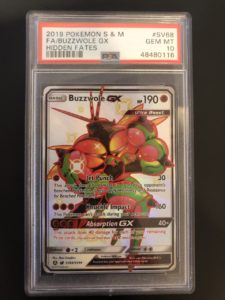
Each company is going to charge different prices for different service levels. Newer companies will charge less for a quick one-week turnaround. This is great if you’re extra eager to get your cards back but you don’t want to break the bank. But reputation is important to consider when doing this.
Reputation and resale value are what drive the market when it comes to the buying and selling of slabs. PSA has long held the top spot, fetching the highest prices for their slabs. They also have a deeply rooted reputation as one of the best grading services worldwide.
CGC and BGS are also great options, and with PSA these form the ‘big three’ grading services. If you want to grade your cards, one of these three companies is the best choice.
However, despite the hate they receive, smaller grading services still have a place in the industry. If you want to have your cards graded for your personal collection and you have no intention of increasing their value by much, why not choose a cheaper service? Another reason is if you live outside the United States. It can save you lots of money and time to grade with a service inside your own country.
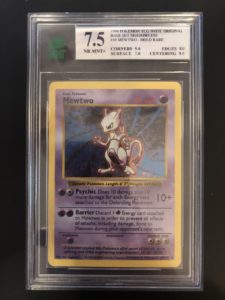
When does grading a card increase its value?
Well, the truth is that the value is going to increase pretty much no matter what, as long as it’s graded.
However, profit is another question. Some cards aren’t worth very much, maybe just $1. If you have a card like this graded, the value may increase by, let’s say $15. So the value of your card is now $16, but how much did it cost you to get graded?
Each grading service is going to have different price points. Usually, it is more expensive to grade a single card compared to submitting it in bulk. Plus, it will cost more for a quick turnaround.
So, when does grading a card increase its value? When the cost to have it graded plus the value of the card does not exceed the anticipated market value after grading.
Conclusion
Grading your cards can be a fun and rewarding process, but long, tedious, and expensive, too. Purchasing already graded cards can be better if you can afford to burn a little extra on them. After all, it is good knowing that the card is already authenticated and you know its condition to be true.
If you’re looking into having your own cards graded, one of the big three grading services is the way to go. However, living outside the US is just one reason that one might choose to go with one of the smaller, cheaper companies. It’s important to do your research and check reviews before you send your cards off! Good luck!
